SOWK 487 Week 06 - Group Practice Models - Mutual Aid
A presentation at Heritage University @ CBC Week 06 in in Pasco, WA 99301, USA by Jacob Campbell
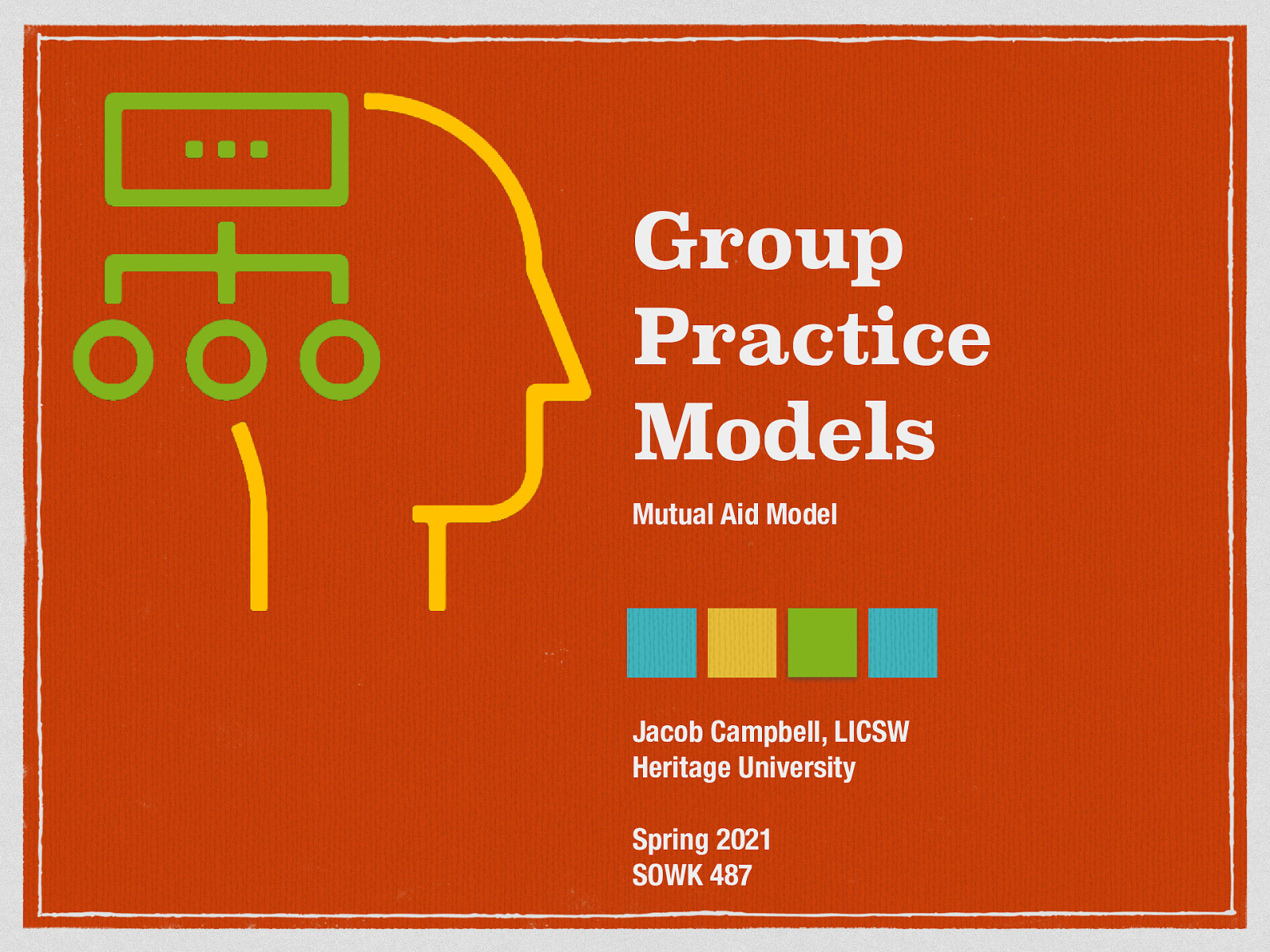
SOWK 487 Spring 2021 Planning: Class 06
Time: Wednesday’s from 5:30-8:15
Date: 02/17/21
Content: The Mutual Aid Model
Reading Assignment: Garvin et al. (2017) Chapter 7
Due Dates:
- A-01: Synchronous Class Engagement Attend class
- **A-02: Asynchronous Class Engagement **Local community mutual aid groups Post by Sunday 02/21/21 at 11:55 PM with no replies required via my Heritage Course Forums
- Read Garvin et al. (2017) Chapter 7
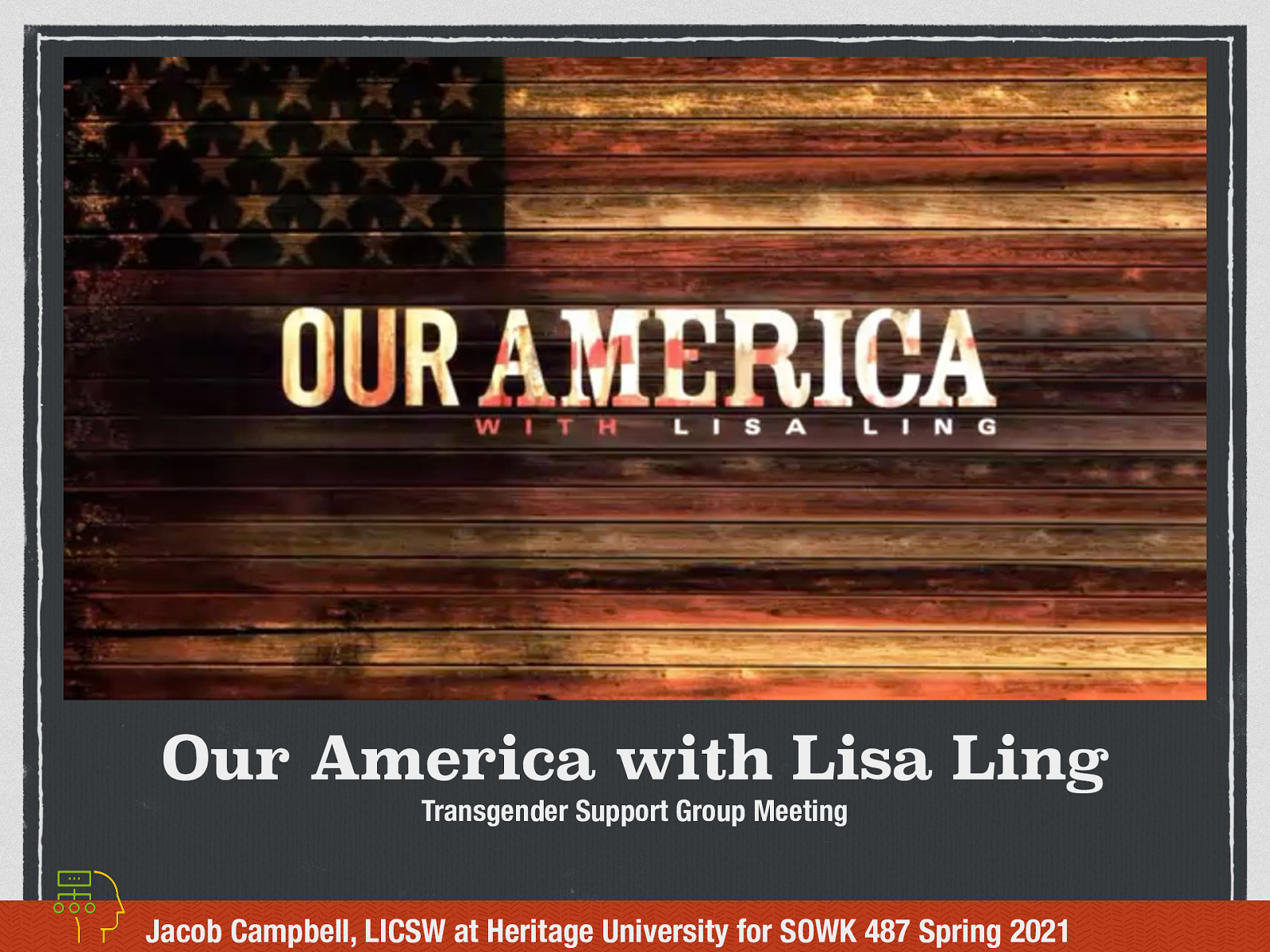
Introduction
Oprah Winfrey Network (2011, Feb 23) Transgender support group meeting | Our America with Lisa Ling | Oprah Winfrey Network [Video]. Retrieved from https://www.youtube.com/watch?v=n7cq8Gezx4Y.
This video features what could probably be characterized as a Mutual Aid modeled group.
[Whole Class Activity] Watch the video clip.
[Whole Class Activity] While there was not a lot of watching the psychologist facilitate the group, what are some things that you might have seen that would apply to mutual aid? What would be some things that you saw the facilitator do?
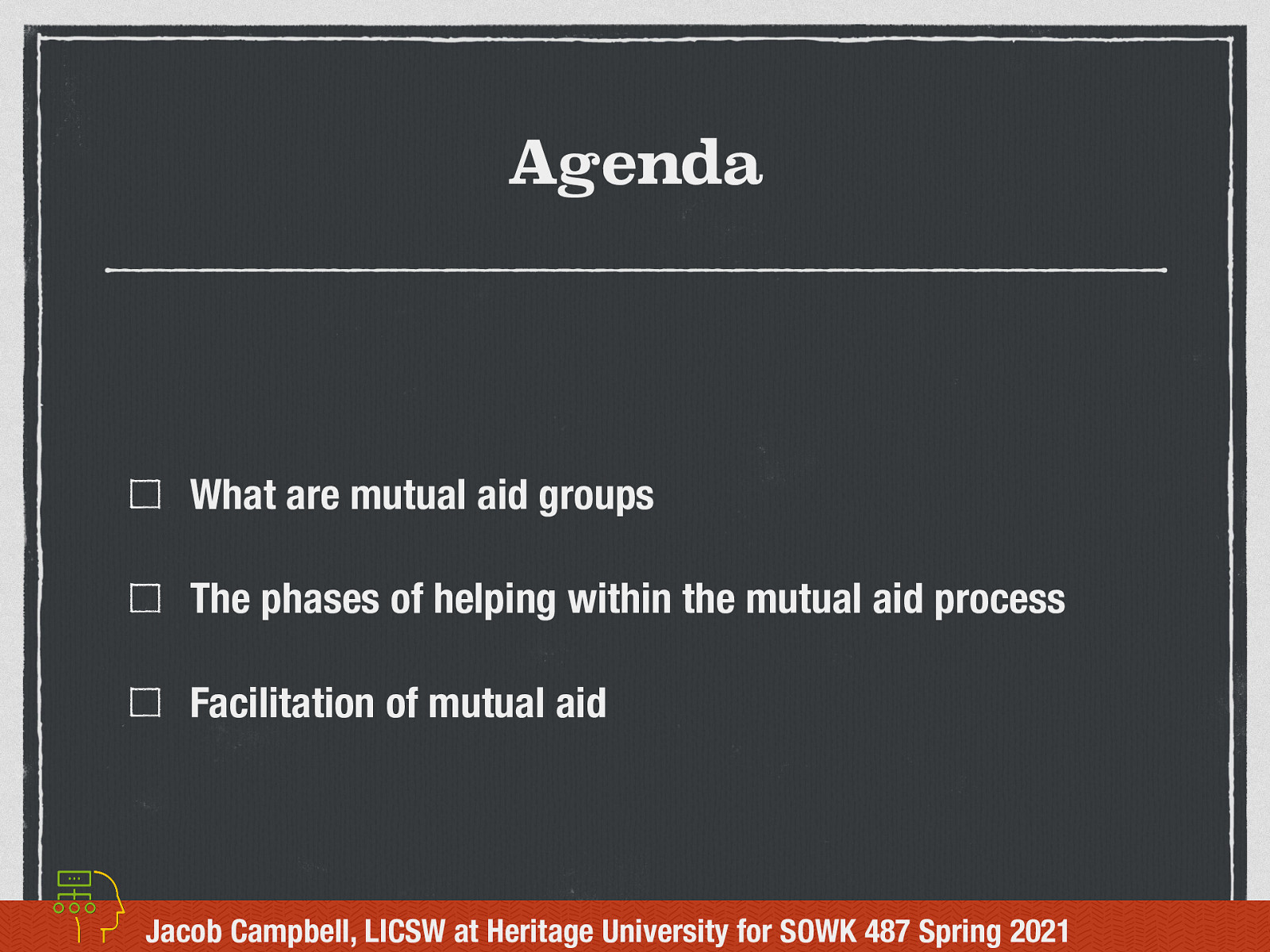
Agenda
- What are mutual aid groups
- The phases of helping within the mutual aid process
- Facilitation of mutual aid
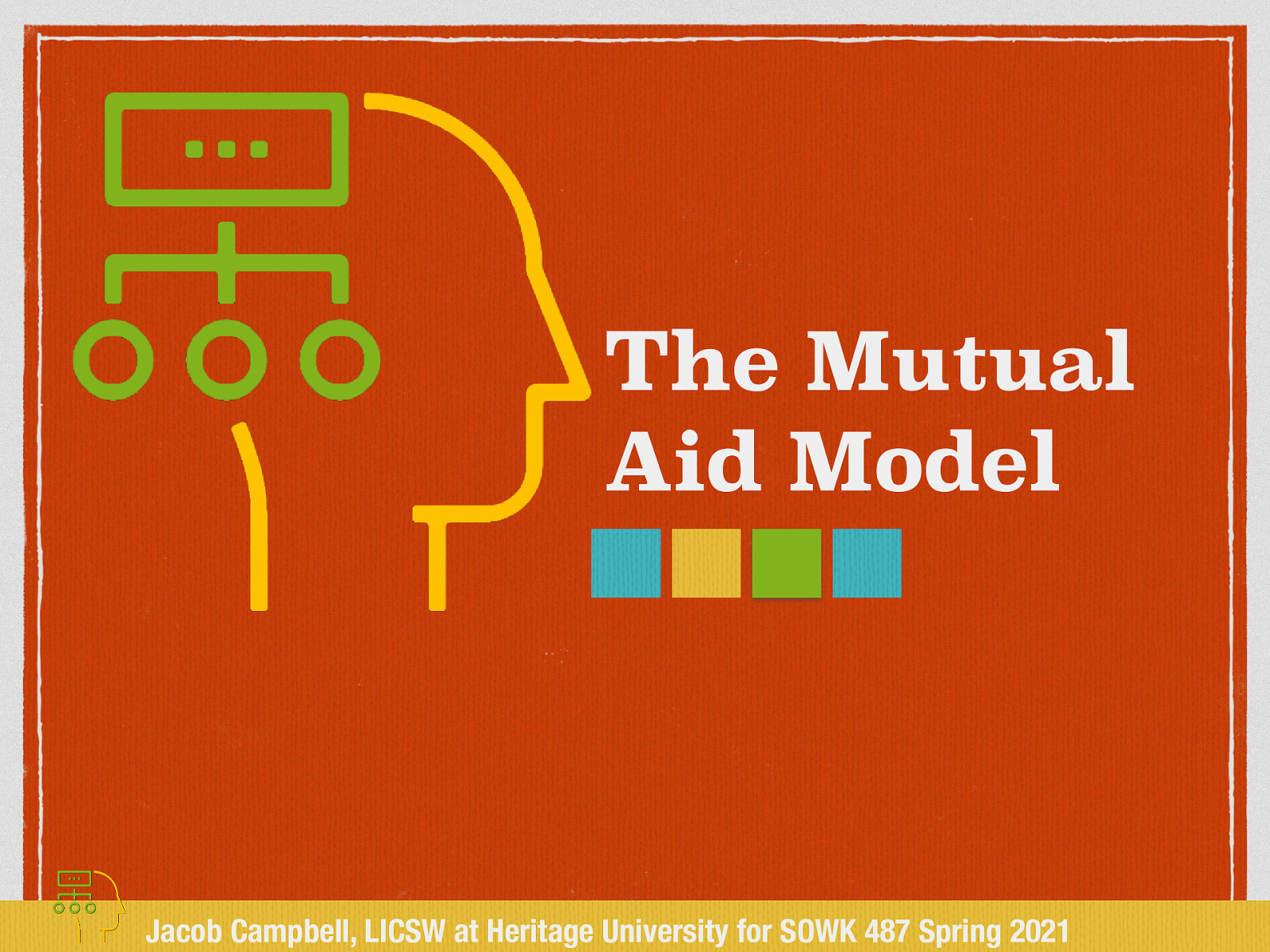
The Mutual Aid Model
The mutual aid model is a model of running groups where members help each other (such as a support group). There are two areas of concerns that a facilitator must address
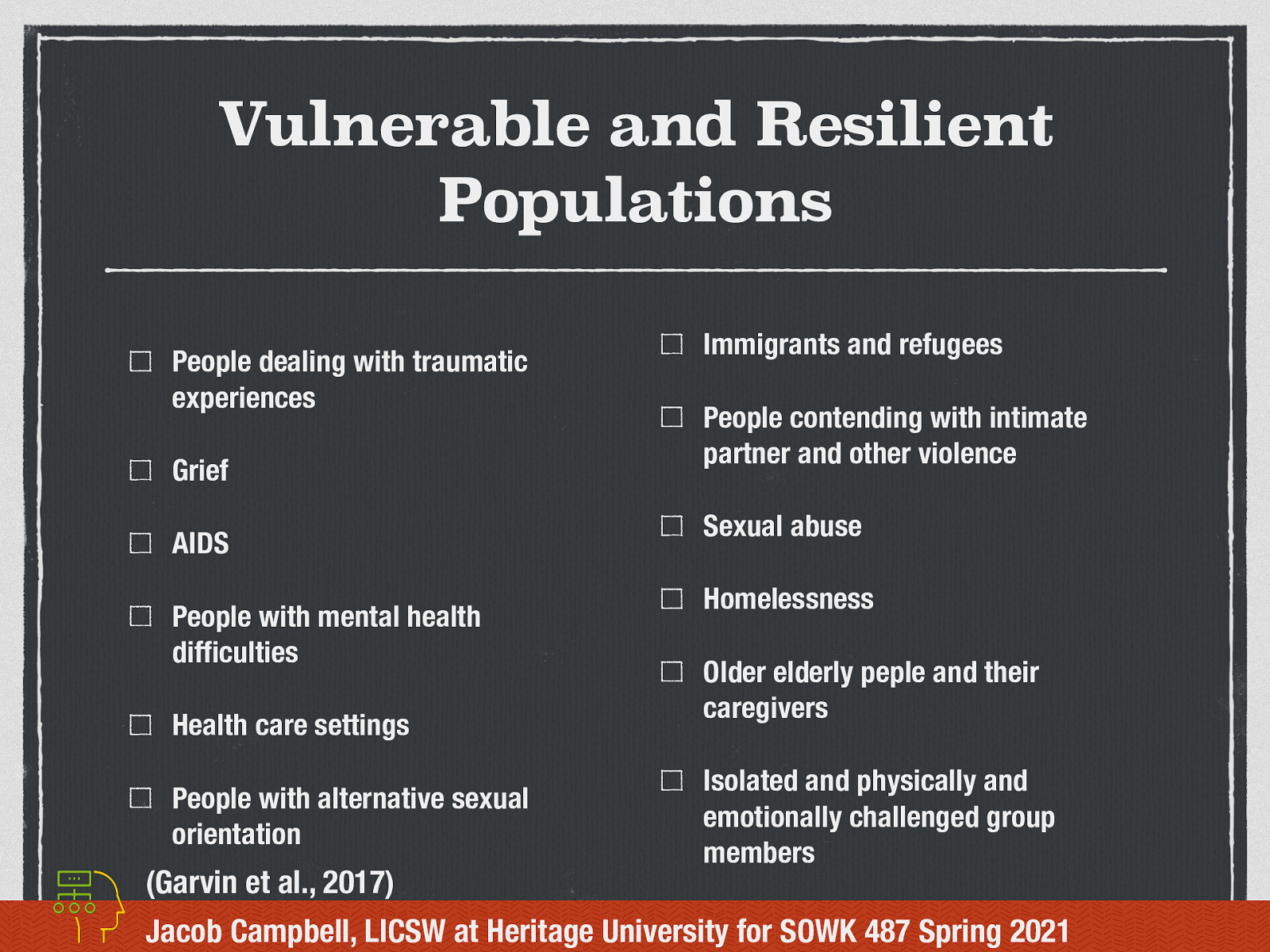
Vulnerable and Resilient Populations
(Garvin et al., 2017)
Mutual Aid is used with many different populations that are both vulnerable and resilient. Really, any population that is
Isolated and physically and emotionally challenged group members
In the literature there is research around the following:
- People dealing with traumatic experiences
- Grief
- AIDS
- People with mental health difficulties
- Health care settings
- People with alternative sexual orientation
- Immigrants and refugees
- People contending with intimate partner and other violence
- Sexual abuse
- Homelessness
- Older elderly people and their caregivers
- Isolated and physically and emotionally challenged group members
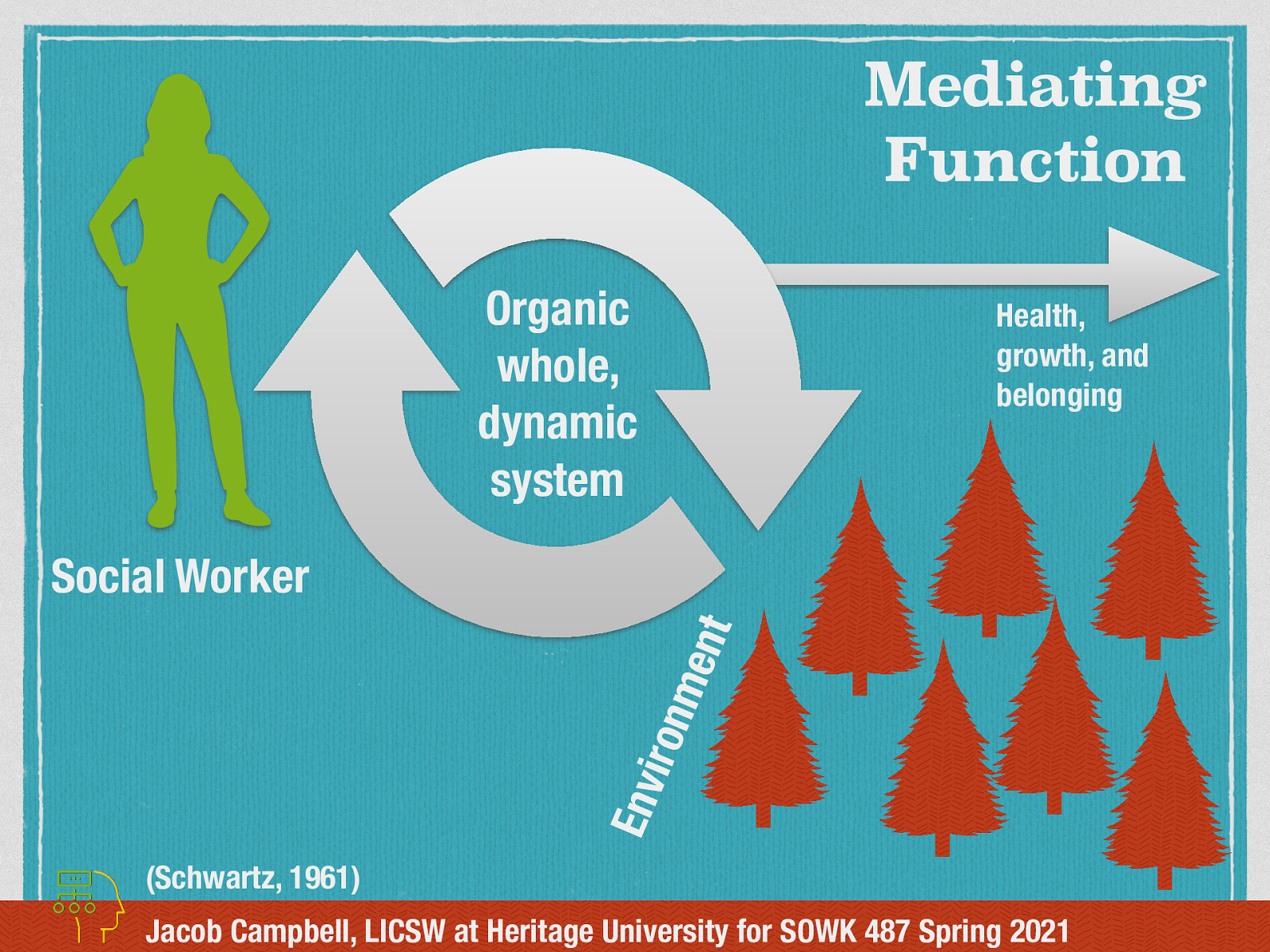
Mediating Function (1 of 2)
Schwartz is prolific in writing about doing group work, and he looked at doing social work with groups as a interactionist model.
Schwartz would describe that groups are organic whole and dynamic systems.
The social worker effects and is affected by the environment of the group.
He proposed that groups of people working together move towards “health, growth, and belonging”
This mediation function of social work is to mediate the transactions between the group and societal institutions and between individual members within the group.
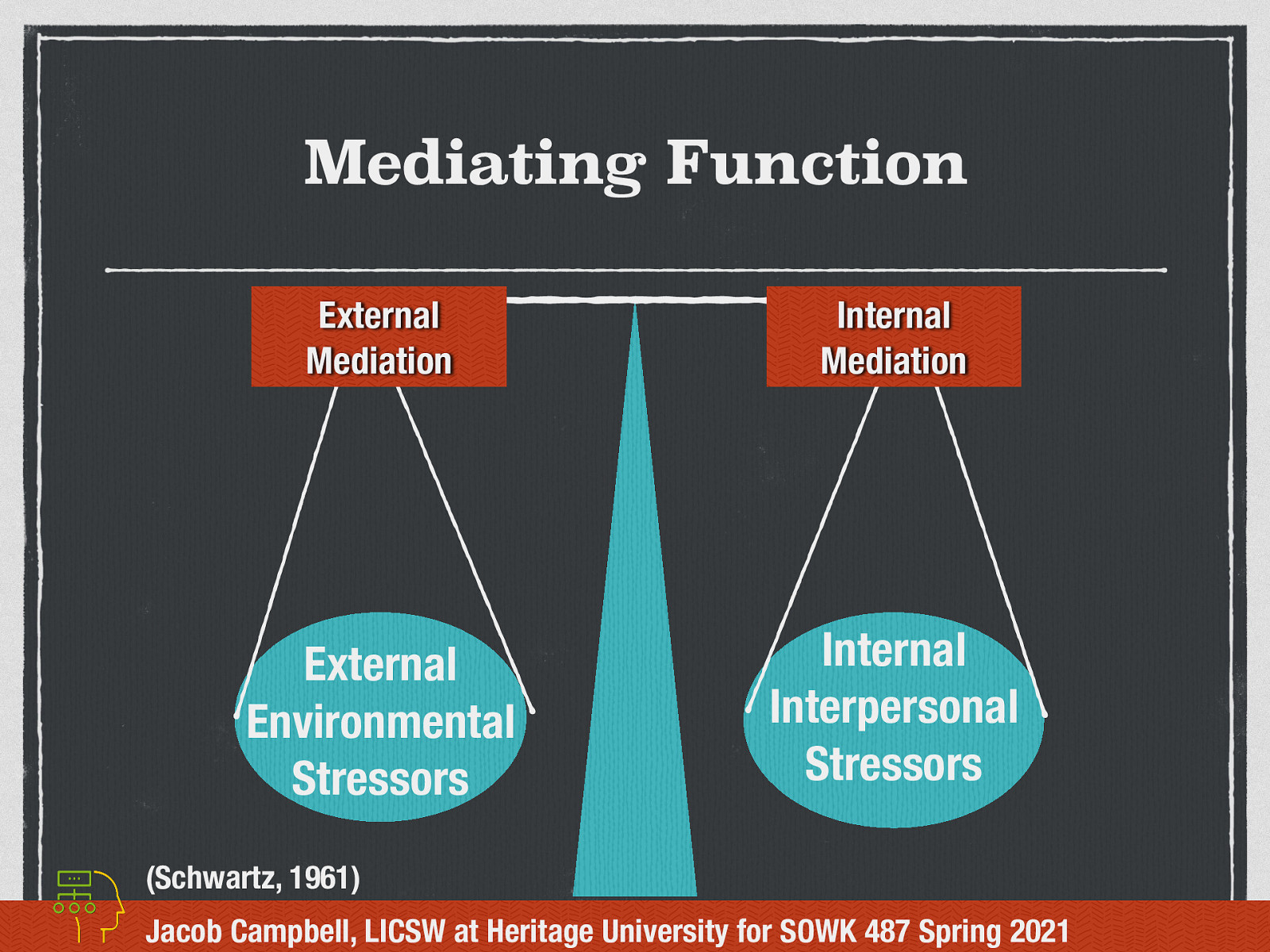
Mediating Function (2 of 2)
- Deal with external, environmentally induced stressors
- How does the facilitator navigate between identify with the group and the agency
- How does the facilitator make sure that there aren’t other external stressors for participants.
- Deal with internal interpersonal induced stressors
- Managing dysfunctional communications
- Relationship patterns (withdrawal, factionalism, alliances, scapegoating)
- Identify patters of behavior and encourage members to change behaviors
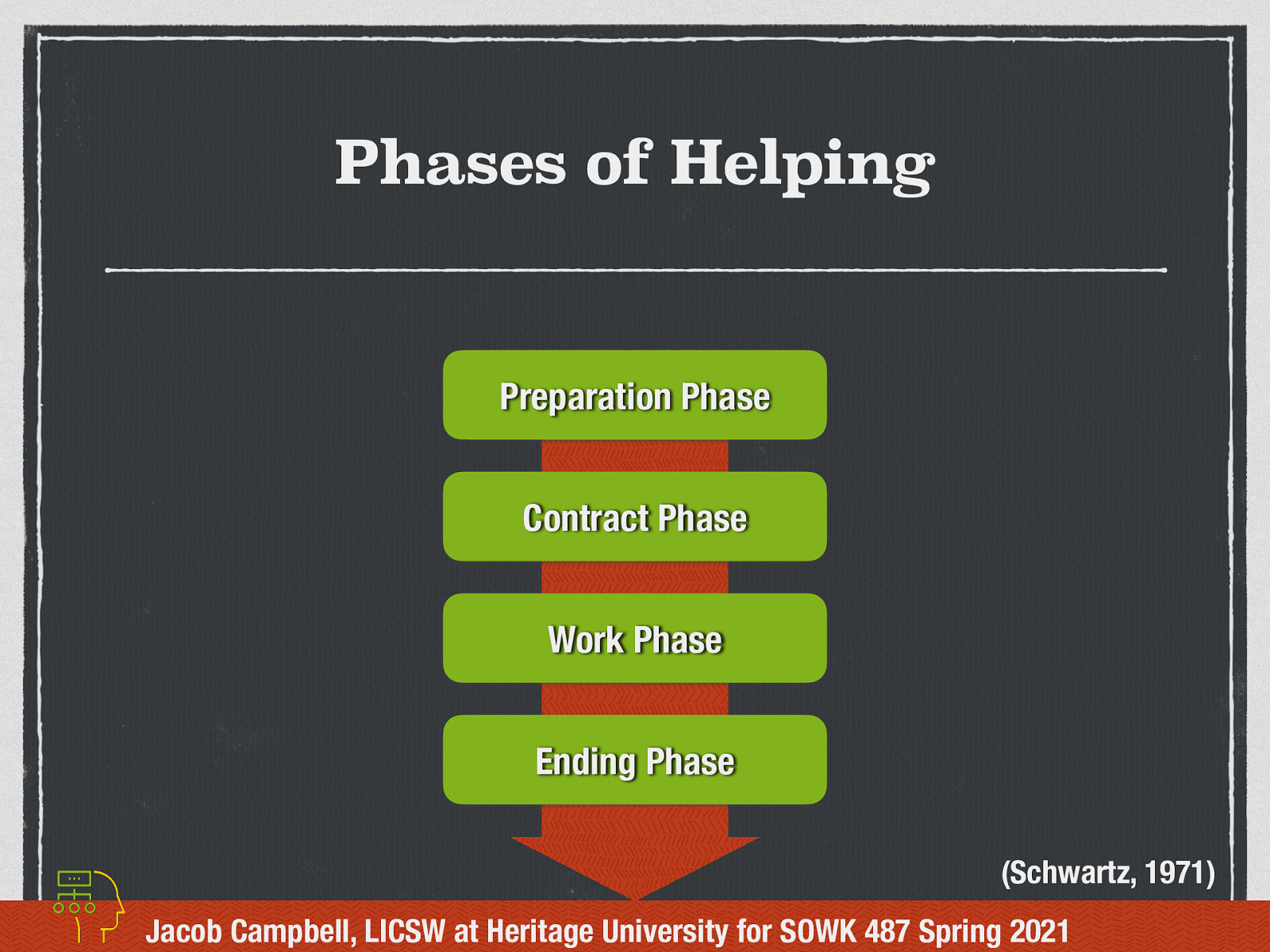
Phases of Helping
(Schwartz, 1971)
There are four interrelated helping phases…
- Preparation Phase
- Contract Phase
- Work Phase
- Ending Phase
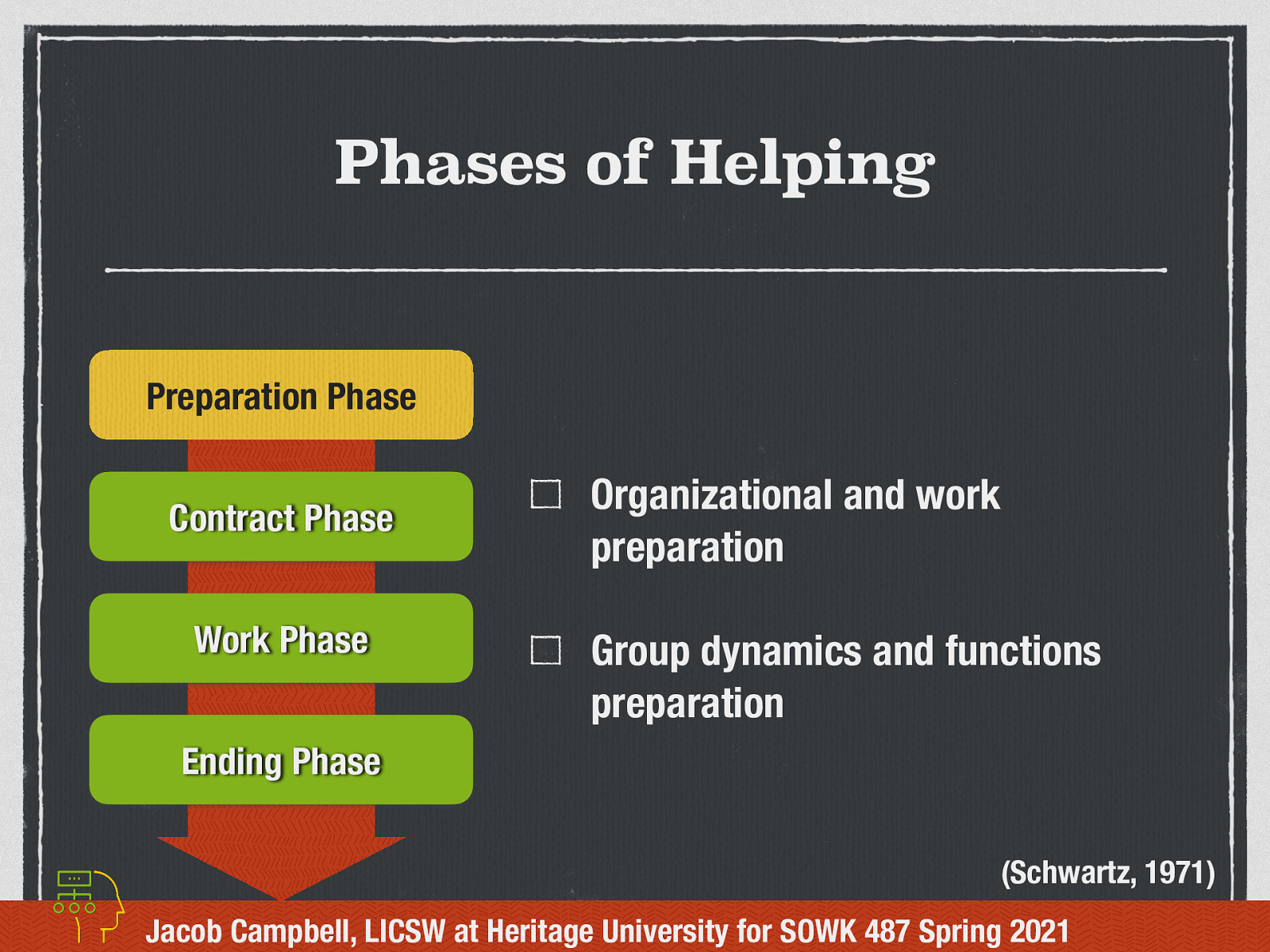
Preparation Phase
(Schwartz, 1971)
Preparation Phase: The worker with lay the groundwork for the implementation of the group.
- Organizational and work preparation
- i.e. is it planned who, what, where, when, how etc.
- What is it going to look like
- Group dynamics and functions preparation
- i.e. Groups size, focus, needs, etc.
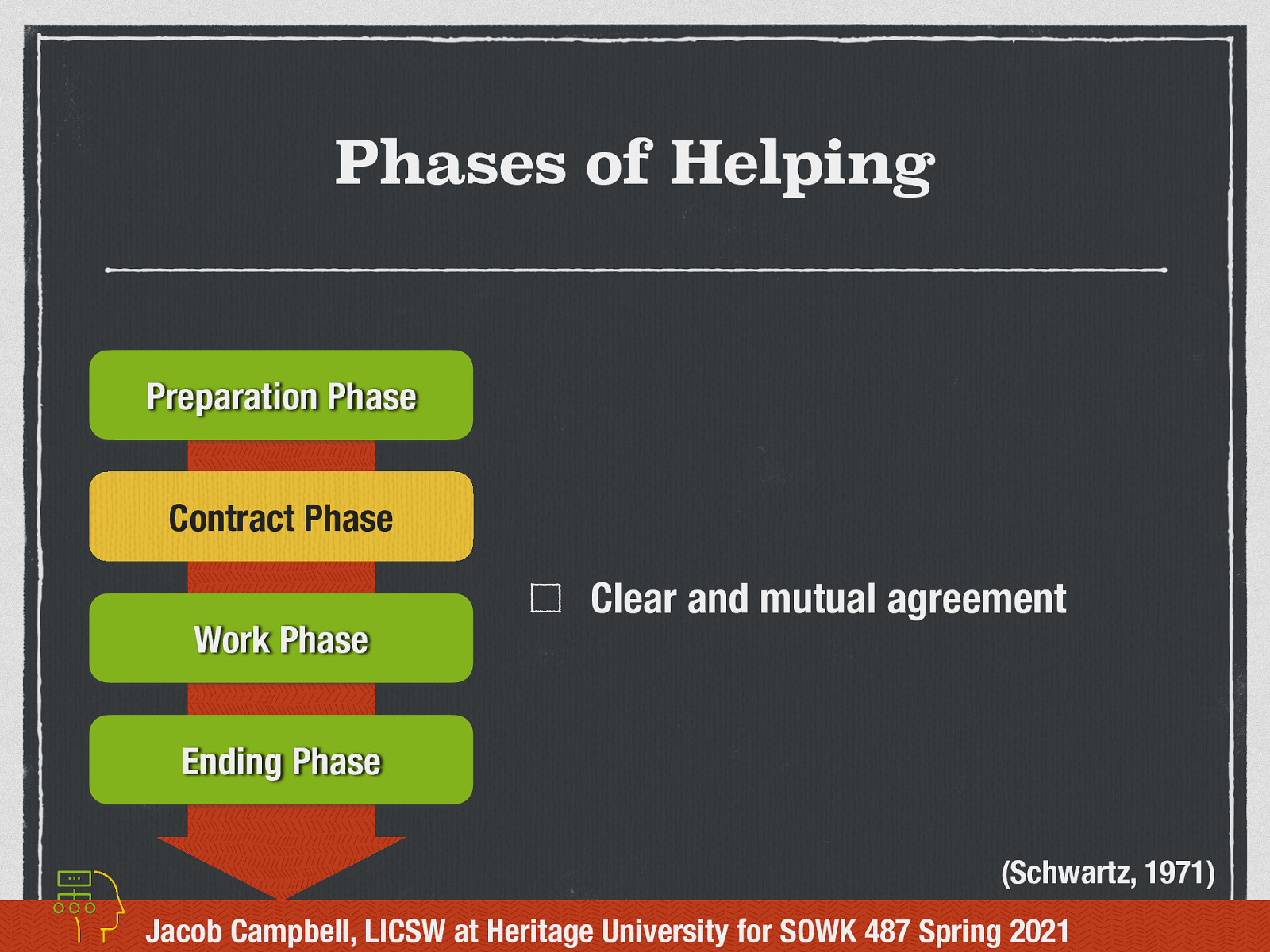
Contract Phase
(Schwartz, 1971)
Contract Phase: Getting buy in for the group
- Worker helps group reach a common agreement that is clear and mutual agreement.
- Obtaining member reactions to services
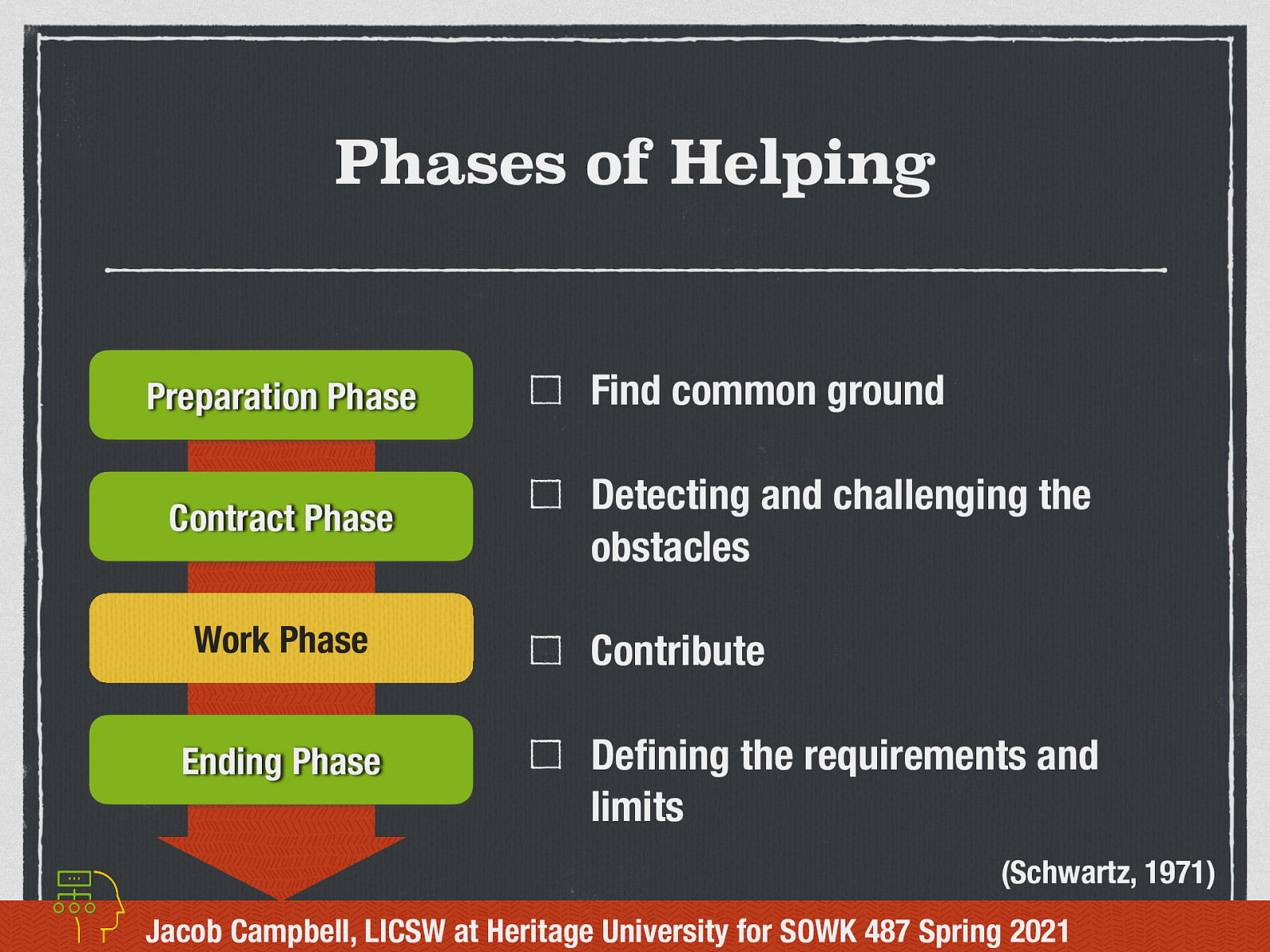
Work Phase
(Schwartz, 1971)
Work Phase: The implementation of the mutual aid
- Finding, through negotiation, the common ground between the requirements of the group members and those of the systems they need to negotiate
- Detecting and challenging the obstacles to the work as these obstacles arise
- Contributing ideas, facts, and values from his or her own perspective when he or she things that such data may be useful to the members in dealing with the problems under considerations
- Defining the requirements and limits of the situation in which the client -worker system is set.
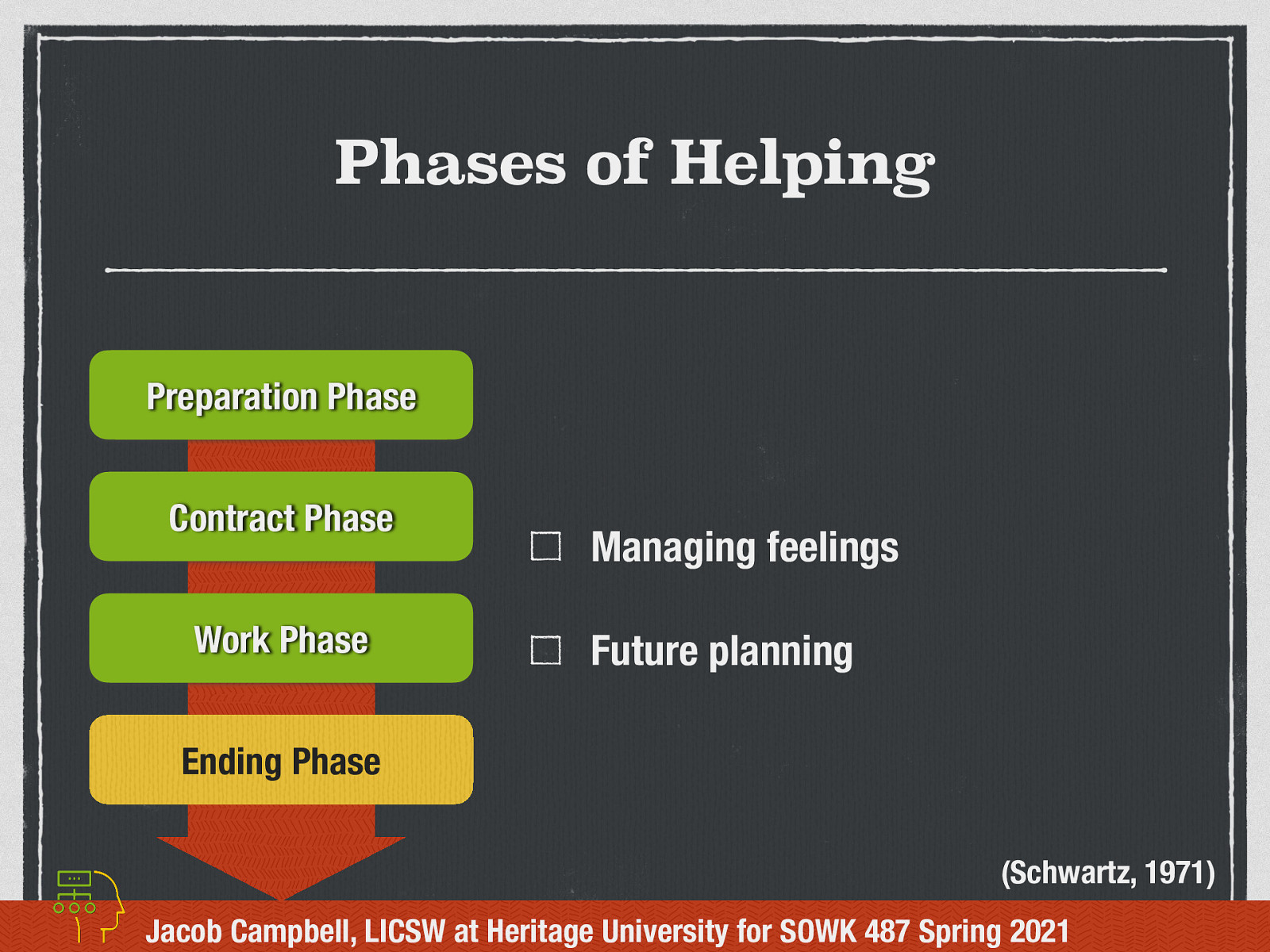
Ending Phase
(Schwartz, 1971)
Ending Phase: All groups end
- Managing feelings
- Future planning
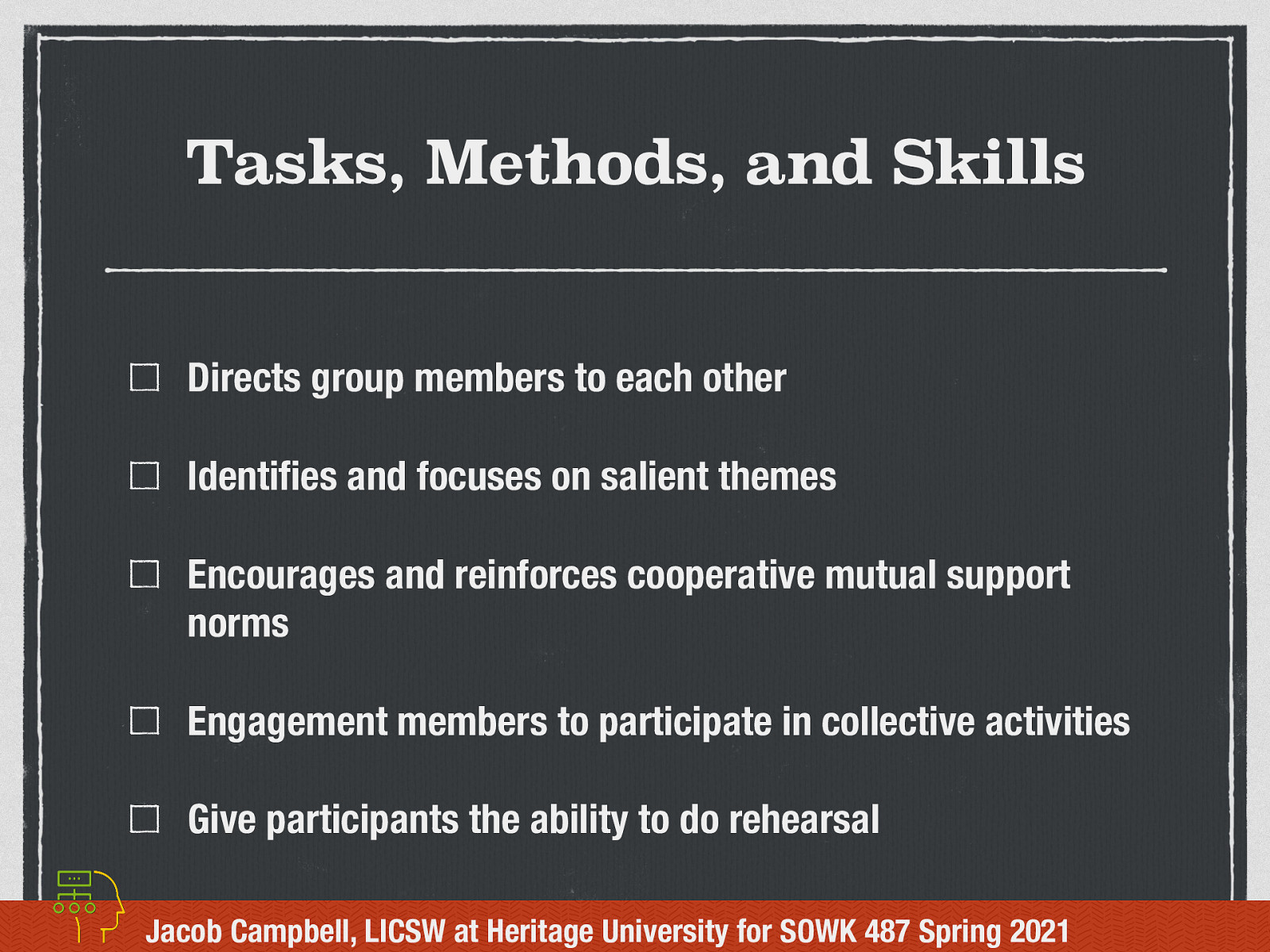
Tasks, Methods, and Skills
Some of the tasks, methods, and skills used for the Mutual Aid Model are…
- Directs group members to each other
- Identifies and focuses on salient themes
- Encourages and reinforces cooperative mutual support norms
- Engagement members to participate in collective activities
- Give participants the ability to do rehearsal
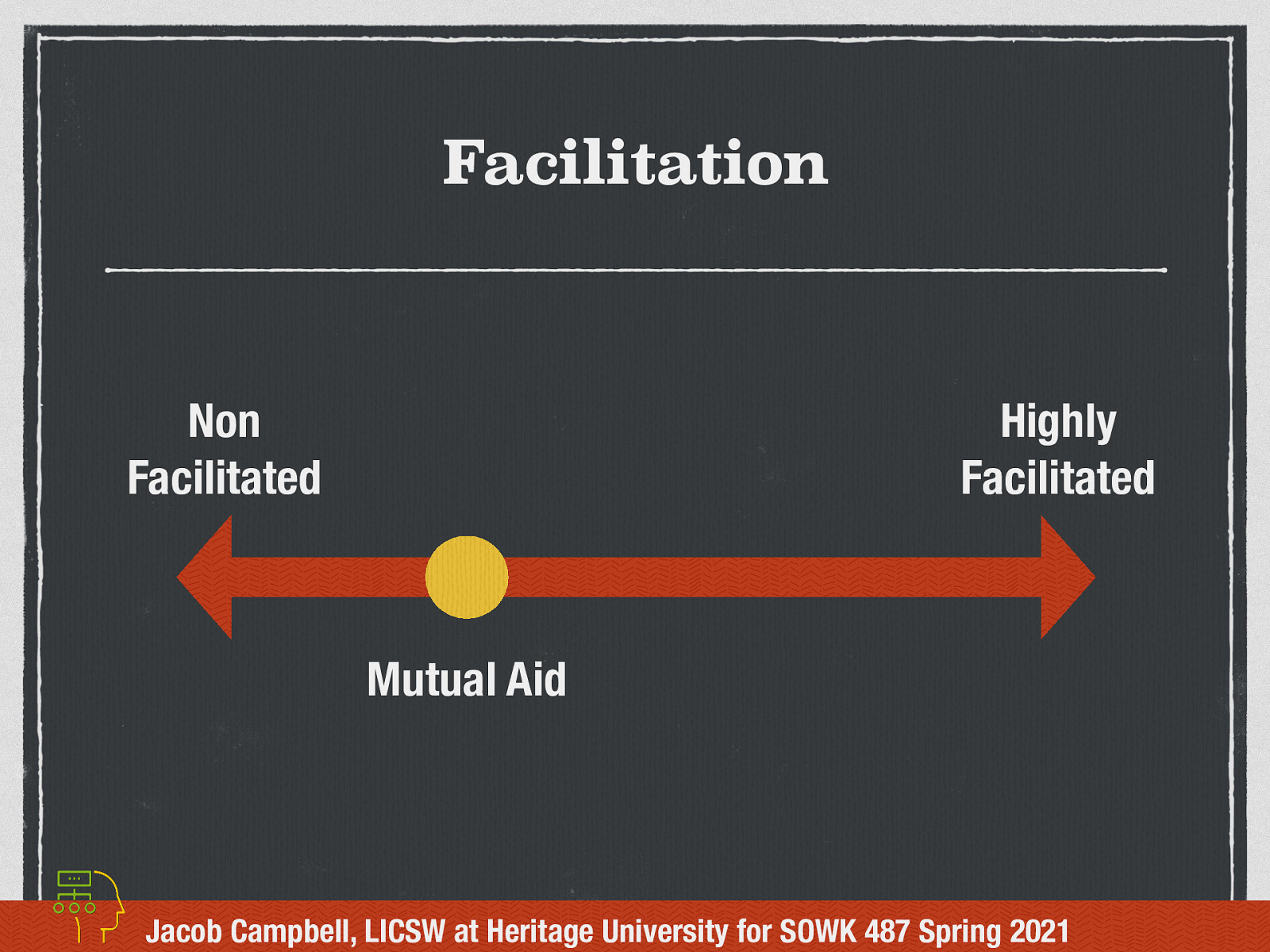
Facilitation
When a mutual aid model group is being facilitated, it is much closer to a non facilitated group compared to say a EBP group with specific and lots of facilitator directions.
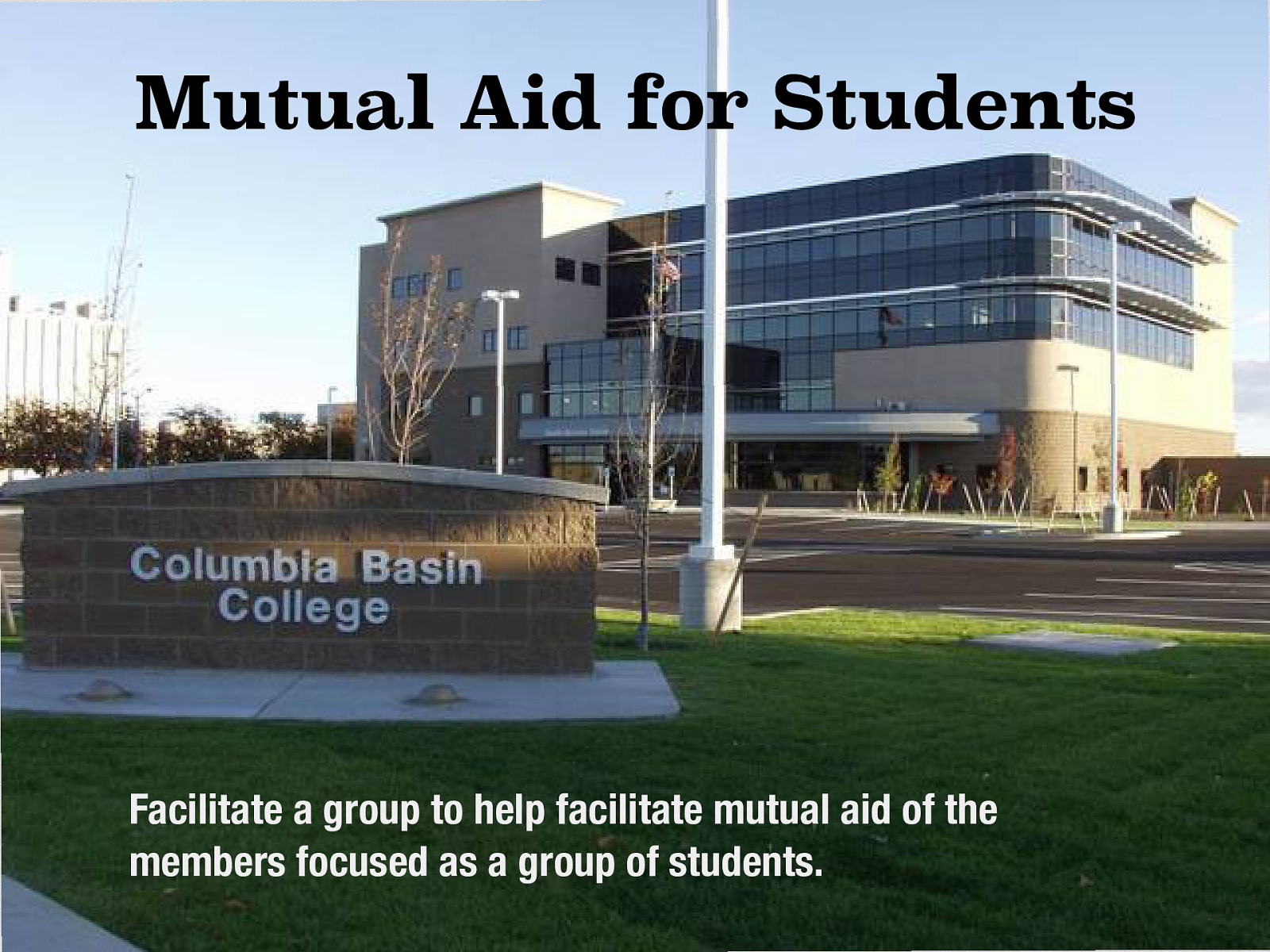
Mutual Aid for Students
We are going to do an activity, and have all of you have the opportunity to facilitate a mutual aid for students group.
Facilitate a group to help facilitate mutual aid of the members focused as a group of students.
- Three different support groups
- First person to facilitate to work in the contracting phase
- Other members will facilitate the working phase.
- 10 Minutes each facilitator
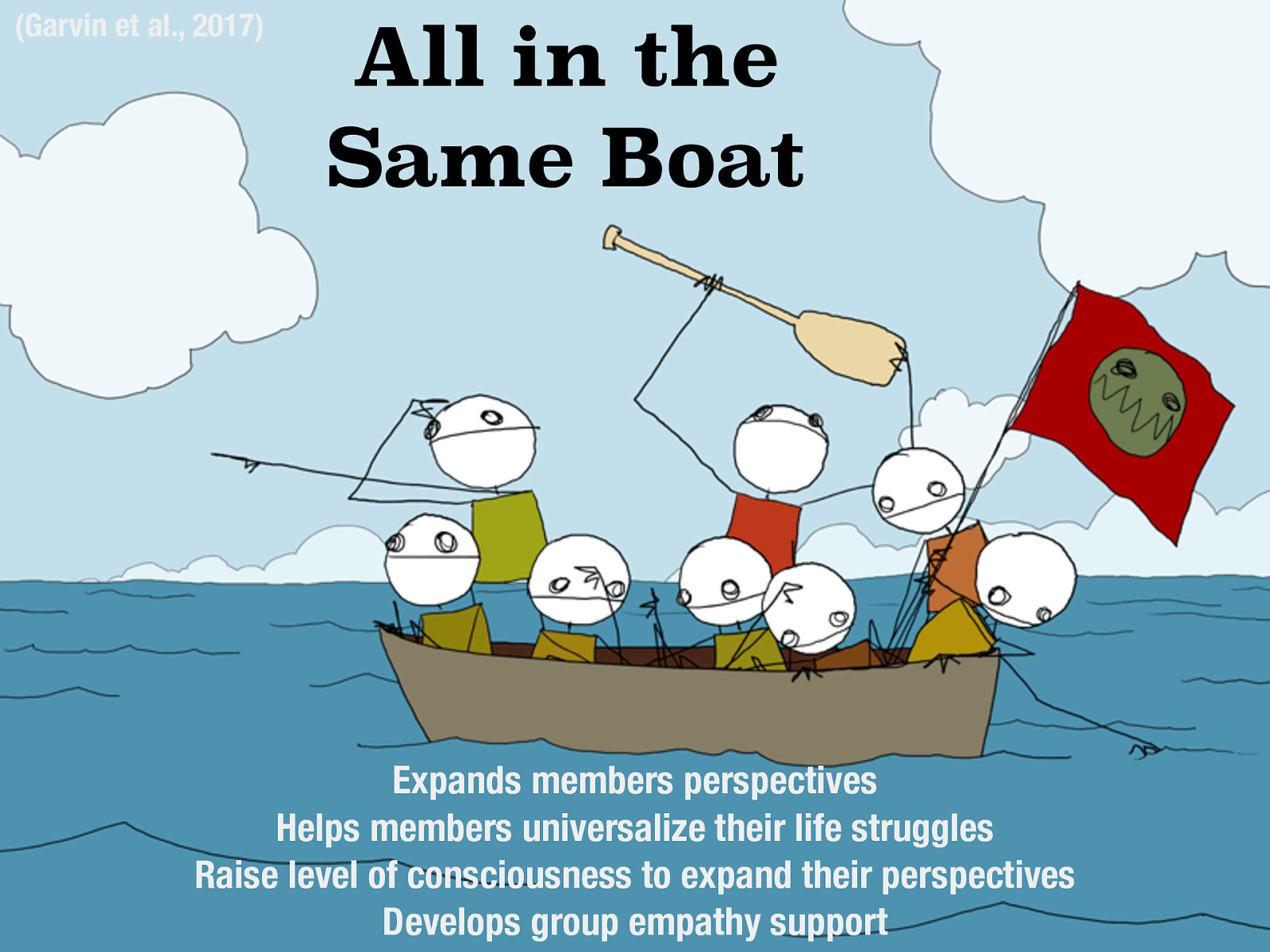
All in the Same Boat
(Garvin et al., 2017)
One way the mutual aid model works and a way of conceptualizing it is the idea of helping people to realize that we are all in the same boat.
- Expands members perspectives
- Helps members universalize their life struggles
- Raise the level of consciousness to expand their perspectives
- Develops group empathy support
During weeks six and seven, we bring our focus back to therapeutic group models. First, this week we will look at the less structured mutual aid groups, and next week we will be looking into cognitive-behavioral group work. We will be examining what mutual aid groups are used for, the phases of helping that happen with mutual aid, facilitation of these groups.
